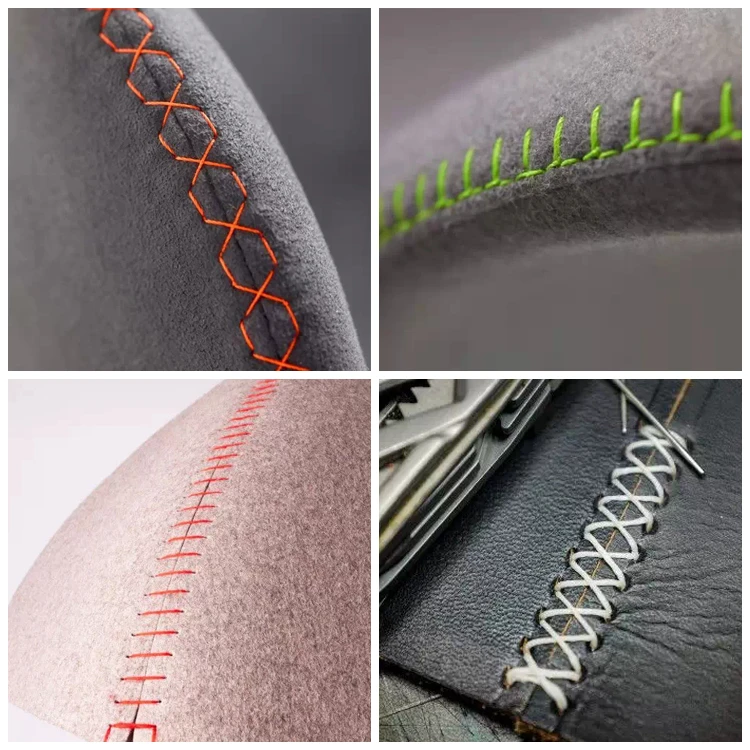leather sewing machine price
The Price of Leather Sewing Machines A Comprehensive Guide
When it comes to crafting exquisite leather goods, one essential tool stands apart from the rest the leather sewing machine. These specialized machines are designed to handle the unique challenges that leather presents, including heavy weight, thickness, and the need for precise stitching. As such, understanding the pricing dynamics of leather sewing machines is crucial for both hobbyists and professionals alike.
Determining Factors in Pricing
1. Machine Type Leather sewing machines come in various types, including walking-foot machines, compound-feed machines, and heavy-duty domestic sewing machines. Walking-foot machines, which feature a unique feeding mechanism that allows for even feeding of multiple layers of leather, tend to be on the higher end of the price spectrum, ranging from $1,000 to over $3,000 for industrial models. In contrast, standard heavy-duty domestic machines that can sew leather may start around $200 but have limitations in terms of thickness and durability.
2. Brand Reputation Just like in any other market, brand reputation plays a significant role in determining prices. Well-known brands such as Singer, Juki, and Consew have built their names by consistently producing reliable and efficient machines. Consequently, their products are often priced higher due to perceived quality. Lesser-known brands might offer more affordable options but could compromise on durability and performance.
3. Features and Capabilities The more features and capabilities a machine has, the higher its price will typically be. Features such as adjustable speed controls, automatic needle positioning, and multiple stitch patterns can enhance usability and versatility, making machines with these options more costly. For instance, a leather sewing machine with a walking foot and a wide range of stitches might be priced upwards of $1,500, while a basic model may only offer straight stitch capability at a lower price point.
4. Portability For those who require a machine they can transport, the cost may vary based on weight and construction. Heavy-duty industrial models may be built for permanence and could weigh several hundred pounds, while portable or light-duty machines that can handle leather will be less expensive and easier to move, often costing under $500.
5. Market Trends Supply chain issues, raw material costs, and economic conditions can all influence the prices of leather sewing machines. For example, during periods of high demand for leather goods, the prices for sewing machines may increase due to higher demand and shortages in production.
Budgeting for Your Leather Sewing Machine
leather sewing machine price

Before making a purchase, it's important to establish a budget. Beginners may find that a mid-range machine costing between $300 to $800 can fulfill their needs for personal projects. As skills improve or if one intends to start a small business, investing in a higher-end machine ($1,000 and above) may be worthwhile.
Researching the market is also essential. Websites and forums dedicated to leather crafting often have user reviews that can help you gauge the value and performance of specific models. Additionally, looking for deals on sewing machines during sales events can greatly reduce costs.
Cost-Effective Alternatives
If purchasing a new leather sewing machine seems financially unfeasible, there are options for acquiring quality machines at lower prices
- Used Machines Purchasing a secondhand leather sewing machine can save money. Websites like eBay, Craigslist, and specialized forums often have listings for used machines. It’s important, however, to verify the condition and functionality before making a commitment.
- Renting or Leasing For those who wish to start a leatherworking project without a significant investment, consider renting or leasing a machine. This can be a great way to test different models before deciding which one best suits your needs.
- DIY Solutions For the craft-savvy, modifying a regular sewing machine with leather-specific accessories might also be a viable option, though it may require additional research and experimentation.
Conclusion
The world of leather sewing machines is vast and varied, offering a range of prices and options to suit different needs. By understanding the key factors that influence the price and doing thorough research, both novices and experienced crafters can find the perfect machine to elevate their leatherworking projects. Whether investing in a high-end industrial machine or exploring affordable alternatives, the right leather sewing machine can be an invaluable asset in the creation of beautifully crafted leather goods.
-
Industrial Cylinder Arm Sewing Machine: Revolutionizing Heavy-Duty SewingNewsJul.28,2025
-
Cylinder Arm Sewing Machine: Perfect for Special Sewing ApplicationsNewsJul.28,2025
-
Cylinder Bed Sewing Machine: Essential for Sewing Complex MaterialsNewsJul.28,2025
-
Heavy Duty Sewing Machine: The Essential Tool for Industrial ApplicationsNewsJul.28,2025
-
Computerized Pattern Sewing Machine: Revolutionizing Precision StitchingNewsJul.28,2025
-
Heavy Duty Industrial Sewing Machine: Power Meets PrecisionNewsJul.28,2025
-
Leather Sewing Machine: The Industrial Standard for Tough MaterialsNewsJul.18,2025





























